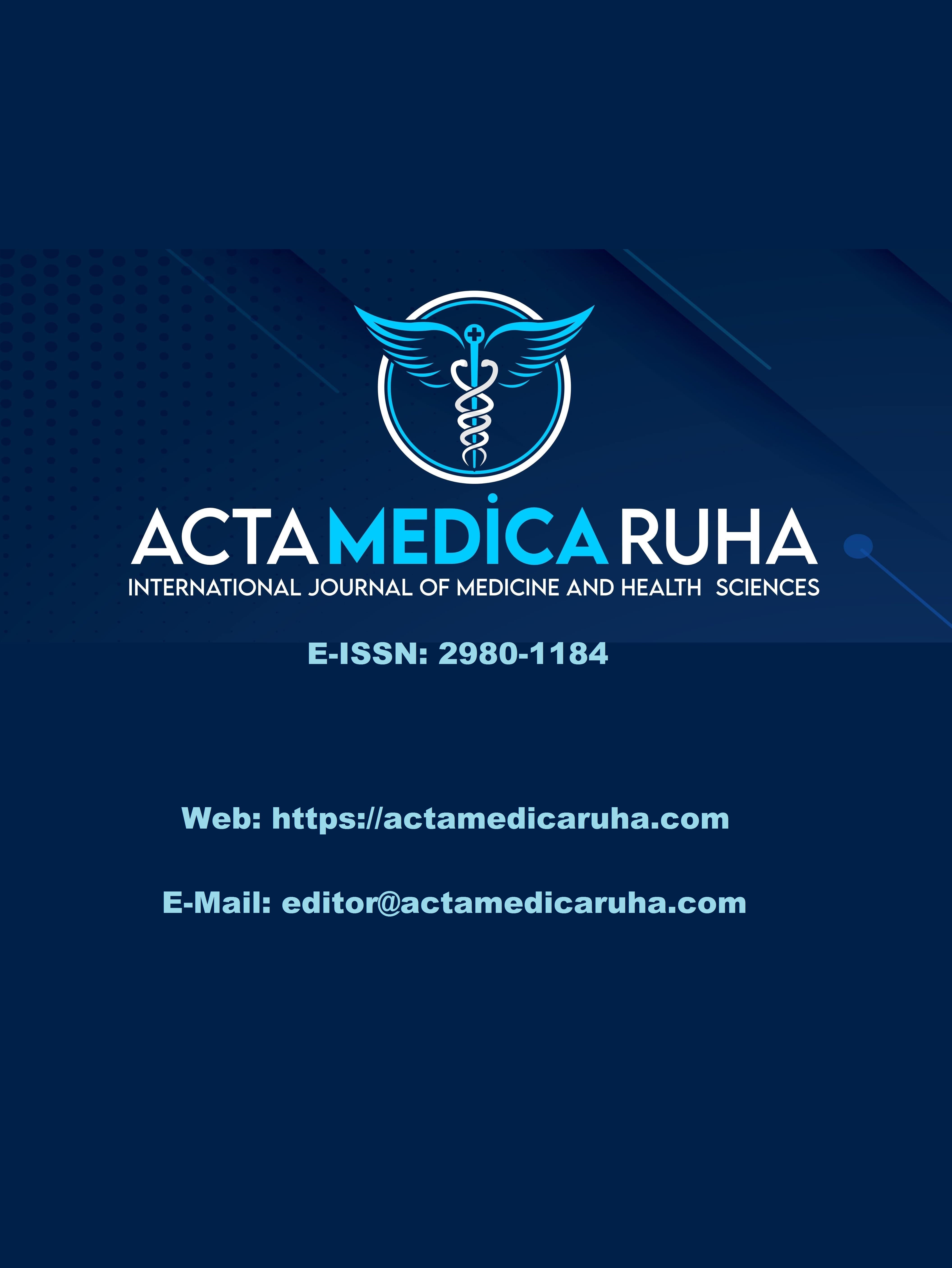English Clinical Features & Early Treatment Outcomes Of Children With Crush Syndrome After Kahramanmaraş Earthquake
Research Article
DOI:
https://doi.org/10.5281/zenodo.8174082Keywords:
Crush Syndrome, extremity involvement, fasciotomy, debridement, earthquakeAbstract
Objective: Extensive muscle crush injury that results in crush syndrome is often fatal if not treated promptly and vigorously. Although cases of Crush syndrome experienced by adults were frequently published in the previous literature, data on Crush syndrome in children are limited. In this study, we aimed to elucidate the clinical and laboratory findings of children with Crush syndromewho applied to our institution after the earthquake.
Methods:Thirty-eight children with crush syndrome who applied to our institution after the earthquake disaster have been enrolled in this retrospective analysis. Demographic, clinical, and laboratory characteristics and early outcomes of children with crush wounds have been evaluated retrospectively. All children with crush wounds have been included in the analysis. Age, sex, height, and weight of the patient, admission and follow-up laboratory parameters, presence of comorbid diseases, and transcutaneous oximetry measurement results have been obtained from the hospital’s electronic database.
Results: The stay under wreckage ranged from 4 to 160 hours, averaging 30 hours. The mean length of hospital stay was 13days, and the length of intensive care unit stay was seven days. There was a statistically significant difference between the initial and final measurements of WBC, PLT, CRP, glucose, BUN, creatinine, AST, ALT, LDH, uric acid, CK, and albumin values (p<0.05). Children with multiple extremity involvementhad significantly elevated initiallaboratory measurements, while those with single extremity involvement presented higher values in the final measurements (p<0.05).
Conclusion: The high creatine kinase levelsmight indicate the severity of muscle damage in Crush syndrome. Elevated creatine kinase could be used to indicatemortality in these patients. Early assessment of compartment pressure can eliminate the risk of amputation. Rapid diagnosis and aggressive fluid resuscitation in the emergency department can prevent acute kidney injury or failure.
References
Matsuzawa G, Sano H, Ohnuma H, et al. Patient trends in orthopedic traumas and related disorders after tsunami caused by the Great East Japan Earthquake: An experience in the primary referral medical center. J Orthop Sci. 2016;(4):507-511. doi:10.1016/j.jos.2016.03.007
Kiani QH, Qazi M, Khan A, Iqbal M. The relationship between timing of admission to a hospital and severity of injuries following 2005 Pakistan earthquake. Chin J Traumatol. 2016;19(4):221-224. doi:10.1016/j.cjtee.2015.12.009
Wang Q. [Treatment of pediatric critical trauma following earthquake disasters]. Zhongguo Dang Dai Er Ke Za Zhi. 2013;15(6):412-415.
Zhang TC. [Types of pediatric trauma in earthquake and key points of treatment]. Zhongguo Dang Dai Er Ke Za Zhi. 2013;15(6):416-418.
Stanley M, Chippa V, Aeddula NR, Quintanilla Rodriguez BS, Adigun R. Rhabdomyolysis. 2023 Jan 16. In: StatPearls [Internet]. Treasure Island (FL): StatPearls Publishing; 2023.
Li N, Wang X, Wang P, Fan H, Hou S, Gong Y. Emerging medical therapies in crush syndrome - progress report from basic sciences and potential future avenues. Ren Fail. 2020;42(1):656-666. doi:10.1080/0886022X.2020.1792928
Kaim Khani GM, Baig A, Humail M, Memon M, Quarashi MA. Musculoskeletal injuries among victims of the Battagram, Pakistan earthquake in October 2005. Prehosp Disaster Med. 2012;27(5):489-491. doi:10.1017/S1049023X12001161
Görmeli G, Görmeli CA, Güner S,. Dursun R. The clinical profile of musculoskeletal injuries associated with the 2011 Van earthquake in Turkey. Eklem Hastalik Cerrahisi. 2012;23(2):68-71.
De Bruycker M, Greco D, Lechat MF, Annino I, De Ruggiero N, Triassi M. The 1980 earthquake in Southern Italy--morbidity and mortality. Int J Epidemiol. 1985;14(1):113-117. doi:10.1093/ije/14.1.113
Tanaka H, Oda J, Iwai A, et al. Morbidity and mortality of hospitalized patients after the 1995 Hanshin-Awaji earthquake. Am J Emerg Med. 1999;17(2):186-191. doi:10.1016/s0735-6757(99)90059-1
China S. Management of continuous ambulatory peritoneal dialysis patients in a disaster: the Japanese experience during the Kobe Earthquake. Ren Fail. 1997;19(5):687-692. doi:10.3109/08860229709109034
Long B, Liang SY, Gottlieb M. Crush injury and syndrome: A review for emergency clinicians. Am J Emerg Med. 2023;69:180-187. doi:10.1016/j.ajem.2023.04.029
Yousefifard M, Toloui A, Forouzannia SA, et al. Prevalence and Mortality of Post-traumatic Acute Kidney Injury in Children; a Systematic Review and Meta-analysis. Arch Acad Emerg Med. 2022;10(1):e89. doi:10.22037/aaem.v10i1.1660
Uz İ, Çetin M, Songur Kodik M, et al. Emergency department management after the 2020 Aegean Sea - Izmir earthquake. Ulus Travma Acil Cerrahi Derg. 2022;28(3):361-368. doi:10.14744/tjtes.2021.89679
Lv Q, Long M, Wang X, et al. The Role of Alpha-1-Acid Glycoprotein in the Diagnosis and Treatment of Crush Syndrome-Induced Acute Kidney Injury. Shock. 2021;56(6):1028-1039. doi:10.1097/SHK.0000000000001839
Burgess S. Rhabdomyolysis: An evidence-based approach. J Intensive Care Soc. 2022;23(4):513-517. doi:10.1177/17511437211050782
Jana S, Mitra P, Roy S. Proficient Novel Biomarkers Guide Early Detection of Acute Kidney Injury: A Review. Diseases. 2022;11(1):8. doi:10.3390/diseases11010008
Bazargani B, Moghtaderi M. New Biomarkers in Early Diagnosis of Acute Kidney Injury in Children. Avicenna J Med Biotechnol. 2022;14(4):264-269.
Torlincasi AM, Lopez RA, Waseem M. Acute Compartment Syndrome. 2023 Jan 16. In: StatPearls [Internet]. Treasure Island (FL): StatPearls Publishing; 2023.
Sraj S, Henderson JT, Bramer M, Gelman J. Principles of Fasciotomy Closure After Compartment Syndrome Release. J Am Acad Orthop Surg. 2022;30(18):879-887. doi:10.5435/JAAOS-D-21-01046
Sever MS, Erek E, Vanholder R, et al. Clinical findings in the renal victims of a catastrophic disaster: the Marmara earthquake. Nephrol Dial Transplant. 2002;17(11):1942-9. doi:10.1093/ndt/17.11.1942
Görmeli G, Görmeli CA, Güner S, Ceylan MF, Dursun R. 2011 Van depremini yaşayan fasyotomi yapılan hastaların klinik analizi. Eklem Hastalık Cerrahisi. 2012;23:156-160
Iskit SH, Alpay H, Tuğtepe H, et al. Analysis of 33 pediatric trauma victims in the 1999 Marmara, Turkey earthquake. J Pediatr Surg. 2001;36(2):368-72. doi:10.1053/jpsu.2001.20719
Dönmez O, Meral A, Yavuz M, Durmaz O. Crush syndrome of children in the Marmara Earthquake, Turkey. Pediatr Int. 2001;43(6):678-82. doi:10.1046/j.1442-200x.2001.01469.x
Sever MS, Erek E, Vanholder R, et al. Marmara Earthquake Study Group. The Marmara earthquake: epidemiological analysis of the victims with nephrological problems. Kidney Int. 2001;60(3):1114-23. doi:10.1046/j.1523-1755.2001.0600031114.x
Jacquet GA, Hansoti B, Vu A, Bayram JD. Earthquake-related injuries in the pediatric population: a systematic review. PLoS Curr. 2013;5:ecurrents.dis.6d3efba2712560727c0a551f4febac16. doi:10.1371/currents.dis.6d3efba2712560727c0a551f4febac16
Glass RI, Urrutia JJ, Sibony S, Smith H, Garcia B, Rizzo L. Earthquake injuries related to housing in a guatemalan village. Science. 1977;197(4304):638-43. doi:10.1126/science.197.4304.638
Hatamizadeh P, Najafi I, Vanholder R, et al. Epidemiologic aspects of the Bam earthquake in Iran: the nephrologic perspective. Am J Kidney Dis. 2006 Mar;47(3):428-38. doi: 10.1053/j.ajkd.2005.11.019
Zhang L, Zhao M, Fu W, et al. Epidemiological analysis of trauma patients following the Lushan earthquake. PLoS One. 2014;9(5):e97416. doi:10.1371/journal.pone.0097416
Oda J, Tanaka H, Yoshioka T, et al. Analysis of 372 patients with Crush syndrome caused by the Hanshin-Awaji earthquake. J Trauma. 1997;42(3):470-5; discussion 475-6. doi:10.1097/00005373-199703000-00015
Downloads
Published
How to Cite
Issue
Section
License
Copyright (c) 2023 Acta Medica Ruha

This work is licensed under a Creative Commons Attribution 4.0 International License.









